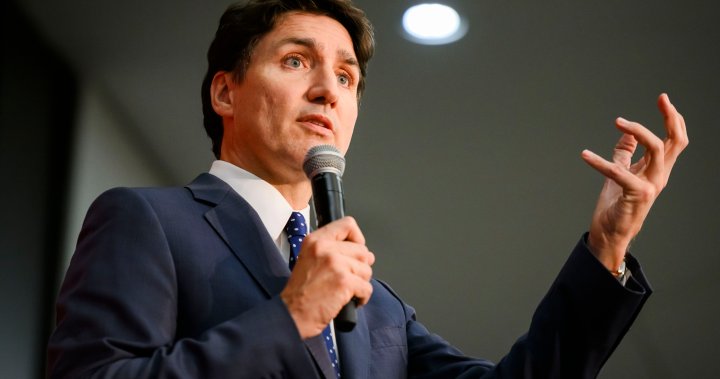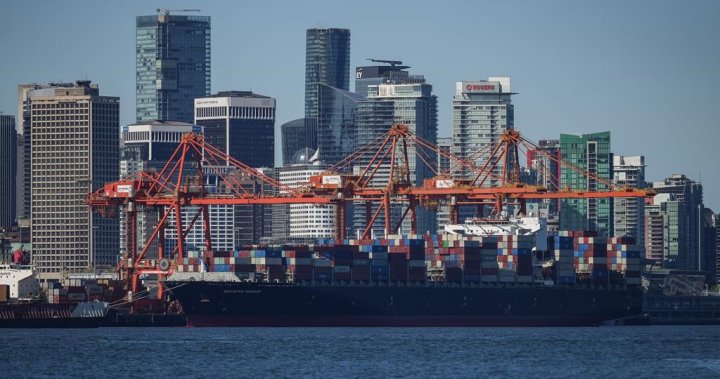The size of the civil service has exploded during the Trudeau Liberals’ nine years in power: growing more than 43 per cent, even though the country’s population has grown by less than 15 per cent in the same period.
As of March 31, the federal government’s payroll included 367,772 persons, according to data just published by the federal Treasury Board. On March 31, 2015, the last full fiscal year that the Harper Conservatives were in power, the civil service population was 257,034. That’s an average annual growth rate of more than 3.6 per cent per year or double Canada’s average annual population growth in the same period of about 1.6 per cent.
The civil service grew by more than six per cent in both 2021 and 2023. By comparison, the size of the civil service shrank in each of the last five years the Harper Conservatives were in power.
“To deliver the essential services on which Canadians rely, the public service adjusts its size according to government priorities and program requirements, with deputy heads ensuring workforce alignment with mandates,” Treasury Board President Anita Anand said in an email statement.
Anand’s department, the Treasury Board Secretariat (TBS), is responsible for broad administration and management of government operations. “Under the Harper government’s [deficit reduction action plan], over 19,200 people lost their job and the quality of service delivery across the country was impacted. By contrast, we will always ensure our public service remains well-staffed and efficient in delivering the quality services Canadians expect and deserve.’’
A TBS spokesperson said the government has committed to finding savings of $4.2 billion over the next four years and those savings will include the elimination of about 5,000 public service jobs over four years by attrition.
That said: neither Anand nor any other minister queried by Global News could provide specifics about what all those extra bureaucrats actually do to maintain or improve quality of service delivery.
For example, the bureaucracy that serves the prime minister has grown dramatically during the Trudeau years. That bureaucracy, known as the Privy Council Office, has 1,288 employees in 2024, an increase of 561 people or 77 per cent compared to the 727 PCO employees in 2015. And yet, when asked to explain why his office needed so many more employees, a spokesperson for Prime Minister Justin Trudeau did not answer, instead directing queries to the bureaucrats in the PCO.
PCO bureaucrats did not respond to emailed requests for information nor did anyone answer the PCO media relations line or responde to voicemails left at that PCO media relations line.
The growth in the civil service under the Trudeau government is across all departments and all regions of the country, though some departments like the Canada Revenue Agency and some provinces in Atlantic Canada have seen significantly more growth than others.
The dataset published by the Treasury Board includes civilian employees of the Department of National Defence and some civilian employees of the RCMP but does not include either service’s uniformed members nor does it include some categories of RCMP civilian employees. The dataset also omits employee headcounts of Crown corporations such as the CBC, the Canada Mortgage and Housing Corp. or Canada Post.

That data shows most federal government employees, not surprisingly, live in the parts of Ontario and Quebec known as the National Capital Region (NCR). Indeed, the NCR in 2024 was home to 42.3 per cent of all civil servants at the end of the government’s most recent fiscal year on March 31. That’s only marginally more than the 41.7 per cent of civil servants based in the NCR during the Harper government’s final year.
Breaking news from Canada and around the world
sent to your email, as it happens.
The most rapid regional growth during the Trudeau years has been in two Atlantic provinces.
Newfoundland and Labrador now has 7,606 federal government workers, an increase of 2,895 or 61.5 per cent since Stephen Harper’s Conservatives left office.
“The last Conservative government gutted federal jobs in Newfoundland and Labrador, closing Coast Guard stations and Veterans Affairs offices and ignoring opportunities to locate public services in the province.” said Labour Minister Seamus O’Regan, who represents a St. John’s area riding and is the province’s political minister. ” Newfoundlanders and Labradorians are as capable as any Canadian to work for the Government of Canada. I’m glad we reversed the cuts.”
New Brunswick fared even better and now has 13,410 federal government workers, an increase of 5,129 or 61.9 per cent. The political minister for New Brunswick, Public Safety Minister Dominic LeBlanc, deferred comment to the Treasury Board.
As for western Canada, the federal government headcount in British Columbia is up 30 per cent since 2015 to 29,881; it is up in Alberta by 36 per cent to 19,602; up in Manitoba 38.7 per cent to 13,995 but in Saskatchewan, the civil service headcount grew just 15.6 per cent to 6,803.
Ontario and Quebec — outside of the NCR — saw the federal government employee footprint grow 35 per cent and 36 per cent, respectively.
Opposition Leader Pierre Poilievre, who represents an Ottawa-area riding with plenty of civil servants, was not available for comment Tuesday. But his office directed reporters to comments he made in May after the release of a Public Service Commission report which also highlighted the growth in the civil service under the Trudeau government.
“[Trudeau] is delivering worse service. You can’t get anyone on the phone at CRA. Incredible delays just to get a passport. And the federal government is not delivering any services that it wasn’t delivering before,” Poilievre said in Vancouver on May 16.
“In other words, after nine years of Trudeau, Canadians are paying more for bureaucracy to get less in service.”
The overall increase in employee headcount during the Trudeau years can be seen as a reflection of its policy priorities. For example, the department of the Status of Women, as it was known during the Harper years, had just 92 employees in 2015. But with Justin Trudeau at the helm — a self-described feminist prime minister — the department was re-christened as Women and Gender Equality Canada and it now employs 443 people.
The Canadian Human Rights Commission has 300 employees now; it had 204 when Harper finished.
Infrastructure Canada’s headcount is 1,506 now; it was 354 in 2015.

Like the Harper government, the Trudeau government’s single biggest departmental employer — again, outside of uniformed members of the RCMP or the Canadian Forces — is the Canada Revenue Agency. It employed just over 59,000 people at March 31, an increase of more than 19,000 or 48 per cent compared to the 40,059 the CRA employed in the last year of the Harper government’s tenure.
In 2015, there were just six departments with 10,000 employees or more. In 2024, there are 10.
The Trudeau government has 18,961 civil servants purchasing its goods and services at Public Services and Procurement Canada (PSPC), an increase of 57 per cent compared to the group who did the same thing in Harper’s final year in office.
“PSPC plays a key role as a central agency, managing the procurement of goods and services valued at approximately $23 billion on behalf of client departments and agencies annually,” Guillaume Bertrand, a spokesperson for PSPC Minister Jean-Yves Duclos, said in an emailed statement. “This includes delivering of key priorities, like historical investments in the recapitalization of Canada’s armed forces, the Canadian Dental Care Plan and building more homes on public lands.”
The size of Canada’s immigration department — now known as Immigration, Refugees and Citizenship Canada — has more than doubled in nine years, from 6,385 in 2015 to 13,092 this year. “The Department has been experiencing significant year-over-year increases,” a spokeperson said in an emailed statement, “driven by global interest in entering Canada temporarily or permanently. To adapt to this volume, the Department has added resources, embraced new technology, streamlined processing, brought more processes online and remains flexible to respond to global humanitarian crises.”
It can be difficult, in some cases, to make accurate comparisons at the department or agency level. The departments of Indigenous Services Canada and Crown-Indigenous Relations and Northern Affairs, for example, were created when the Trudeau government, in 2017, decided to split up the former department of Indigenous and Northern Affairs Canada (INAC), a department that existed through Harper’s tenure.
But among those departments were a comparison between the Harper era and the Trudeau era is possible, almost none are smaller today. Only the Atlantic Canada Opportunities Agency (ACOA) is smaller — 604 employees now versus 602 in 2015 — and the National Film Board has six fewer employees — 388 now versus 394 then.





